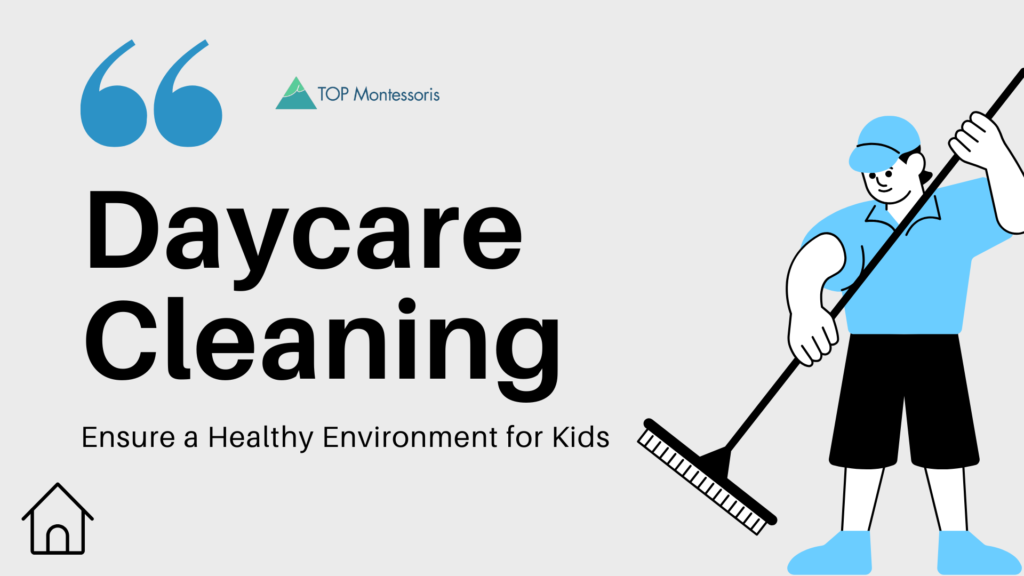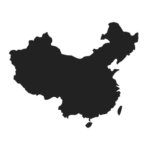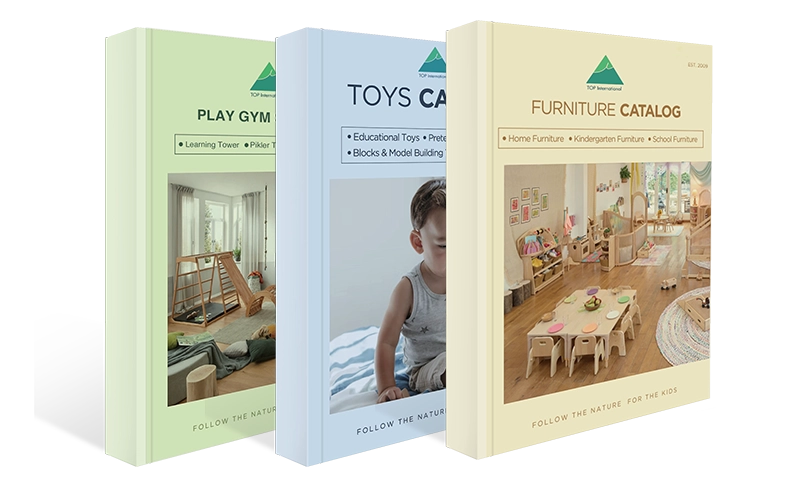Is your daycare cleaning routine protecting the children, or putting them at risk without you realizing it? Are germs hiding in play corners, snack areas, or nap mats? Have your cleaning habits kept up with stricter hygiene expectations from parents and local inspectors? With young children constantly exploring, touching, and sharing, daycare cleaning isn’t just about tidiness—it’s about safety, trust, and responsibility.
Daycare cleaning is the backbone of a healthy childcare environment. From minimizing illness outbreaks to winning parent confidence, effective cleaning practices matter. With the proper daycare cleaning checklist, innovative routines, and high standards, you can ensure your facility stays spotless, safe, and fully aligned with modern health expectations. Whether you’re running a small classroom or a large childcare centre, every surface counts.
A clean daycare is more than just fresh-smelling rooms—it’s a commitment to every child’s well-being. Let’s explore how professional daycare cleaning strategies can help you create a safe, healthy, and happy learning environment that every parent will admire and every child will thrive in.
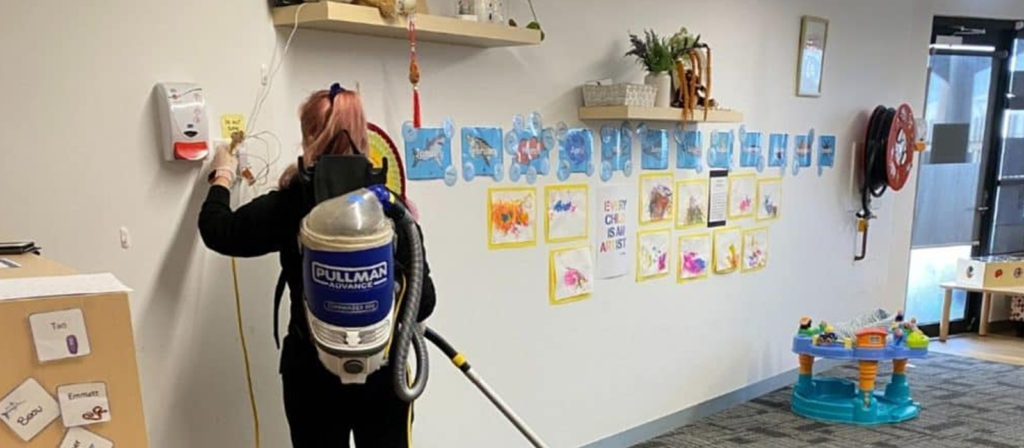
Why Daycare Cleaning Is Non-Negotiable
Germs Don’t Wait — Daycare Cleaning Is a Health Imperative
Daycare cleaning is not just a chore—it’s a frontline defense against illness in early childhood education. In a setting where children share toys, touch their faces, and play closely with one another, germs spread fast. Without proper cleaning protocols, viruses like RSV, the flu, and even hand-foot-and-mouth disease can circulate through your daycare in a matter of days. Young children, with developing immune systems, are especially vulnerable.
Cleanliness Builds Trust With Parents
Parents take cleanliness seriously. When they walk into a classroom and see overflowing trash bins, dusty shelves, or sticky play tables, they start questioning your standards. On the other hand, a daycare that smells clean, looks spotless, and feels organized gives parents peace of mind. Your daycare cleaning routines become part of your brand reputation. Clean facilities don’t just protect health—they also help drive enrollment and retention.
A Clean Environment Supports Child Development
It’s not just about stopping illness. Clean, clutter-free classrooms help children focus better, behave more calmly, and feel more emotionally secure. Research shows that messy or unsanitary environments can increase anxiety and reduce attention spans. A well-maintained environment contributes to the overall well-being of the children, and that should always be the core mission of any childcare center.
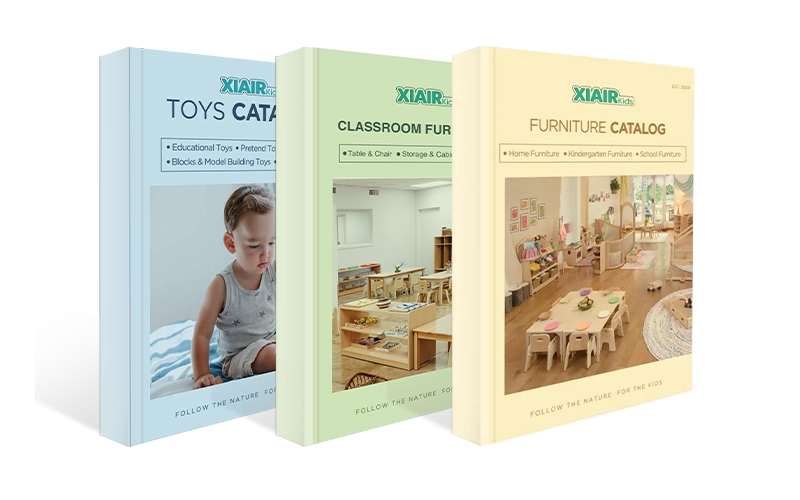
Receive a free catalog and custom layout to help you design your ideal classroom easily.
Understanding Daycare Cleaning Standards
What Are Daycare Cleaning Standards?
Daycare cleaning standards are official hygiene protocols set by government agencies to ensure childcare environments are clean, sanitary, and safe. These standards specify:
- What areas must be cleaned (e.g., diapering stations, eating areas)
- How often must cleaning occur (daily, weekly, monthly)
- What methods or products must be used (e.g., EPA-approved disinfectants)
- What documentation must be kept (e.g., cleaning logs, inspection reports)
Failure to follow these standards can lead to citations, license suspensions, or parent complaints. Following them builds a trusted, professional image and keeps children safe.
Key Regulations by Country
United States
In the U.S., daycare cleaning requirements are regulated at the state level, but most follow the framework of:
This document provides detailed guidelines on cleaning, sanitizing, and disinfecting everything from toys to toileting areas.
على سبيل المثال:
- Food prep areas must be sanitized before and after each use.
- Diapering surfaces must be cleaned after every use and logged.
- Toys mouthed by children must be cleaned after each use.
Each U.S. state also publishes its child care sanitation manual, such as:
- California Child Care Licensing Division Manual of Policies and Procedures
- Texas Minimum Standards for Child-Care Centers
- New York State OCFS Cleaning & Sanitizing Guidelines for Child Day Care
كندا
Canadian childcare centers must follow provincial health guidelines. A standard reference is:
Other provinces, like British Columbia or Alberta, follow similar frameworks that specify:
- Cleaning frequencies
- Approved disinfectants
- Staff training protocols
- Documentation templates for daycare cleaning checklists
أستراليا
Australia’s rules are tied to the:
- National Quality Framework (NQF) and
- Guide to the National Quality Standard (NQS) by ACECQA
The National Regulations (Section 77) specifically cover health, hygiene, and safe food practices. Services must be maintained:
- Written cleaning plans
- Sanitation logs
- Use of approved cleaning agents that meet Australian Standards (AS/NZS 4146)
European Union
In the EU, childcare cleaning standards vary by country, but most align with:
- EU Hygiene Package (Regulation (EC) No 852/2004) – covers food handling and cleaning in facilities.
- National early childhood guidelines, such as:
- UK’s Early Years Foundation Stage (EYFS) Statutory Framework
- Germany’s Daycare Hygiene Recommendations by the Robert Koch Institute
Each facility must use cleaning plans that reflect these requirements, and many centers rely on a structured daycare cleaning checklist to stay compliant and inspection-ready.
Why This Matters
If you’re running a childcare centre, understanding the specific cleaning regulations that apply to your region is critical. Not only do they protect children, but they also safeguard your license, staff, and business reputation. Make sure your daycare cleaning policies and routines are based on official guidelines, and keep your documentation ready for any inspection.
- Add the appropriate regulatory links to your staff handbook or daily checklist.
- Train staff using language from official policies
- Work with childcare cleaning services that understand these regulations accordingly.
Common Contaminants in Daycare Settings
Hidden Germ Hotspots in Daycare
Effective daycare cleaning starts with knowing where germs hide. High-touch and shared areas like toys, nap mats, high chairs, bathroom handles, and art supplies are standard contamination zones. Even clean-looking surfaces may carry harmful bacteria.
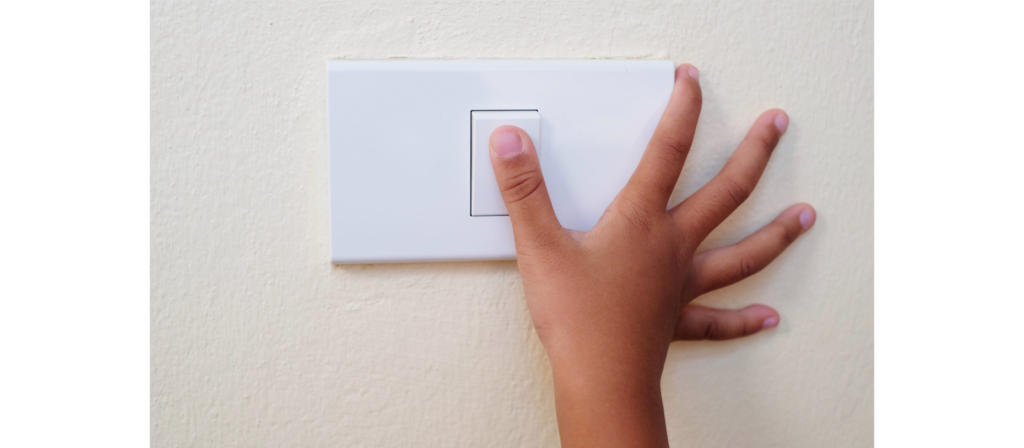
Common Germs Found in Childcare Centres
Daycares are breeding grounds for viruses like:
- Norovirus
- Influenza
- RSV
- Strep bacteria
- Hand-foot-and-mouth disease
Without daily childcare centre cleaning, these pathogens spread fast through touch, sneezes, and shared objects.
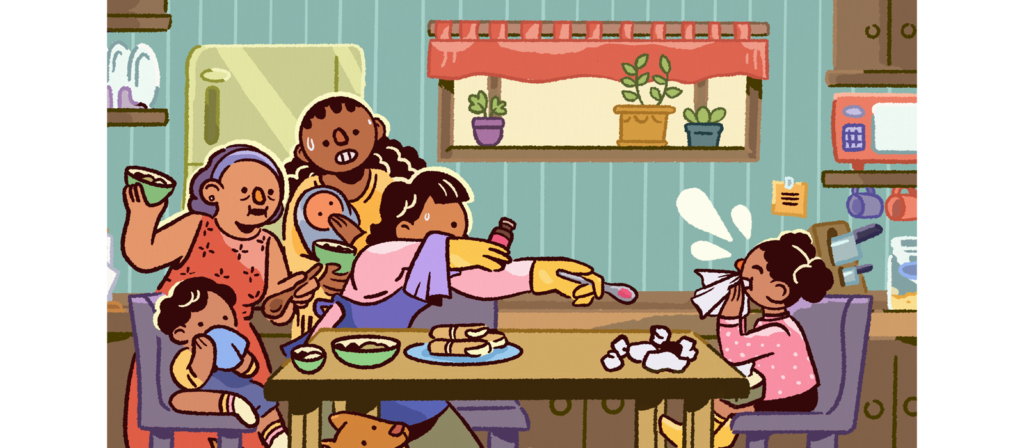
Don’t Forget Allergens
Dust, mold, and harsh chemicals can trigger allergies or asthma. Your preschool cleaning checklist should include air filters, soft surfaces, and the use of non-toxic cleaning products.
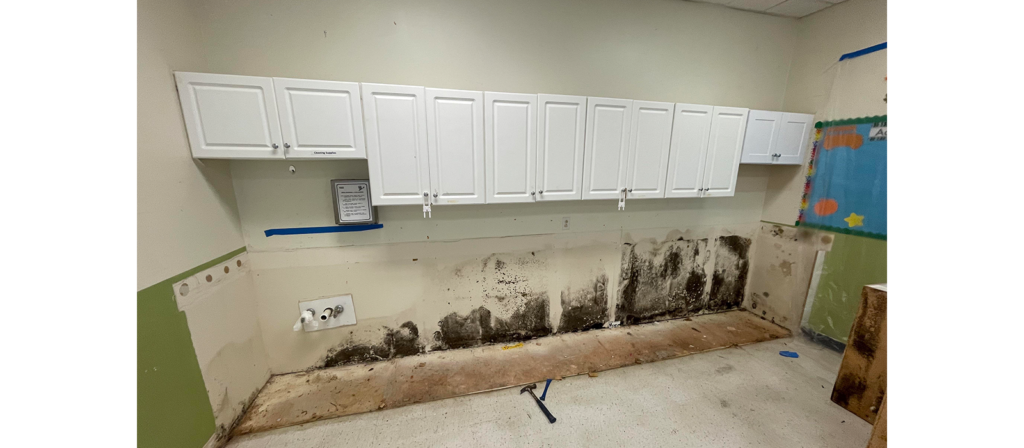
The Risk of Cross-Contamination
Using the same cloth to clean toilets and tables? That’s cross-contamination—and it can undo all your cleaning efforts. Train your team or work with a professional daycare janitorial service to avoid these mistakes.
How to Clean, Sanitize, and Disinfect
Understanding the Difference
In daycare cleaning, not all “clean” is created equal. Each level—cleaning, sanitizing, and disinfecting—serves a different purpose. Mixing them up or skipping steps can result in unsafe conditions for children.
Here’s what each term means:
- Cleaning: Removes dirt, crumbs, and visible messes using soap and water. It doesn’t kill germs but reduces their numbers.
- Sanitizing: Lowers the number of germs on surfaces to a safe level. This is important for toys, eating areas, and any surface children regularly touch.
- Disinfecting: Kills most germs on nonporous surfaces. This is essential for high-risk areas like toilets, diaper changing stations, and sinks.
A solid daycare cleaning checklist will specify when to clean, sanitize, or disinfect based on the surface and the level of risk.
When to Use Each Method
| Surface | Action Required | Frequency |
|---|---|---|
| Food prep surfaces | Clean + Sanitize | Before and after each use |
| Diaper-changing stations | Clean + Disinfect | After each use |
| Toys (mouthed) | Clean + Sanitize | After each use |
| Floors (non-food areas) | Clean | Daily or as needed |
| Bathroom fixtures | Clean + Disinfect | At least daily |
| Tables, chairs, and light switches | Clean + Sanitize | Daily |
Tip: Use color-coded cleaning cloths to avoid cross-contamination between bathroom areas and classrooms. Many professional daycare janitorial services follow this method.
Daycare Cleaning Checklist: Daily, Weekly, Monthly, and Quarterly Tasks
Effective daycare cleaning starts with a well-organized schedule. Not all surfaces need the same frequency of cleaning, but every item and area in your childcare center plays a role in protecting children’s health. Understanding what to clean—and how often—helps reduce the spread of germs, keeps inspections stress-free, and builds trust with parents.
The Centers for Disease Control and Prevention (CDC) provides clear guidance on cleaning and disinfecting early care and education environments. We’ve broken down these practices into a structured daycare cleaning checklist you can implement immediately.
Daily Daycare Cleaning Checklist
Some areas must be cleaned and disinfected every day to maintain hygiene and minimize illness transmission, especially in infant and toddler rooms.
Clean and disinfect daily:
- Infant and toddler toys
- Countertops and tabletops
- Door knobs and cabinet handles
- Drinking fountains
- Shared napping blankets
- Toilets and sinks
- All classroom floors
Clean and sanitize after every use:
- Potty chairs
- Isolation areas
- Diapering stations
- Dining tables after meals
- Food prep counters
- Kitchen sinks
- Mouthed toys
- High chairs (before and after feeding)
- Dishes, bottles, and utensils
Other daily cleaning tasks:
- Wipe up liquid spills and food splashes
- Dust furniture and open shelving
- Vacuum both sides of the carpets or area rugs
- Open windows daily for fresh air circulation
- Clean and sanitize the refrigerator interior
- Organize storage areas
- Empty and clean garbage cans
- Scrub kitchen floors
- Defrost the freezer if ice builds up
- Clean dishwasher filters and remove trapped food
Assigning specific staff to these duties ensures nothing is missed. Use a printed daycare cleaning checklist posted in each room for daily accountability.
Weekly Daycare Cleaning Checklist
Some areas don’t need daily attention but should be addressed weekly to maintain deep cleanliness and prevent the buildup of bacteria, dust, and allergens.
Clean and disinfect weekly:
- Walls (especially at child height)
- Cribs and crib mattresses
- Nap mats and blankets
- Books and bookshelves
- Toys used by older children
- Art supplies, easels, and art room furniture
- Trash cans (deep clean with soap and water)
- Refrigerator and freezer interiors
- Shelving units and cubbies
Weekly tasks should be scheduled on a rotating basis and logged for internal records and licensing compliance. If your team is short on time, hiring a daycare janitorial service can be especially helpful.
Monthly Daycare Cleaning Checklist
Monthly daycare cleaning tackles the less-visible, often-neglected areas that can collect grime, allergens, and even pests if left untreated.
Clean and inspect monthly:
- Curtains, blinds, and drapes
- Windows (inside and out)
- Furniture, especially underneath and behind large pieces
- Window sills and baseboards
- Storage closets, labeled containers, and rarely-used shelves
- All plumbing connections (check for leaks, mold, or blockages)
- Restock first-aid kits and check for expired supplies
These tasks can be completed by internal staff or assigned to a childcare cleaning company as part of a regular maintenance contract.
Quarterly or Seasonal Deep Cleaning Checklist
Every 3–4 months, your daycare should undergo a thorough deep cleaning. This reduces wear on your facility, improves air quality, and ensures long-term safety.
Quarterly cleaning tasks:
- Deep shampoo carpets or steam clean area rugs
- Wash walls and ceilings, especially in kitchens and restrooms
- Move and clean behind large furniture and appliances
- Pressure wash outdoor play surfaces (if applicable)
- Clean HVAC vents and replace air filters
- Reorganize and disinfect emergency storage areas
- Conduct a full inspection of cleaning supply inventory (check expiration dates)
Quarterly cleaning is also the ideal time to review and update your childcare cleaning checklist and ensure all documentation is current for licensing inspections.
Cleaning the Daycare by Area
A strong daycare cleaning strategy isn’t just about frequency—it’s also about location-specific focus. Different areas of your facility carry different levels of risk and require tailored cleaning methods. From diapering stations to art rooms, every space in a daycare has unique hygiene needs.
Below is a breakdown of essential cleaning tasks based on the key areas within a childcare center.
Entryways and Reception Areas
First impressions matter. Your entryway is the first space parents and children interact with, and one of the most overlooked areas for cleaning.
What to clean regularly:
- Door handles, buzzers, and intercom buttons
- Sign-in stations, pens, and touchscreens
- Waiting chairs and front desk surfaces
- Entry mats (vacuum and disinfect)
- Floors (especially on rainy or muddy days)
Maintain visibility by keeping the area free of clutter, trash, or dust.
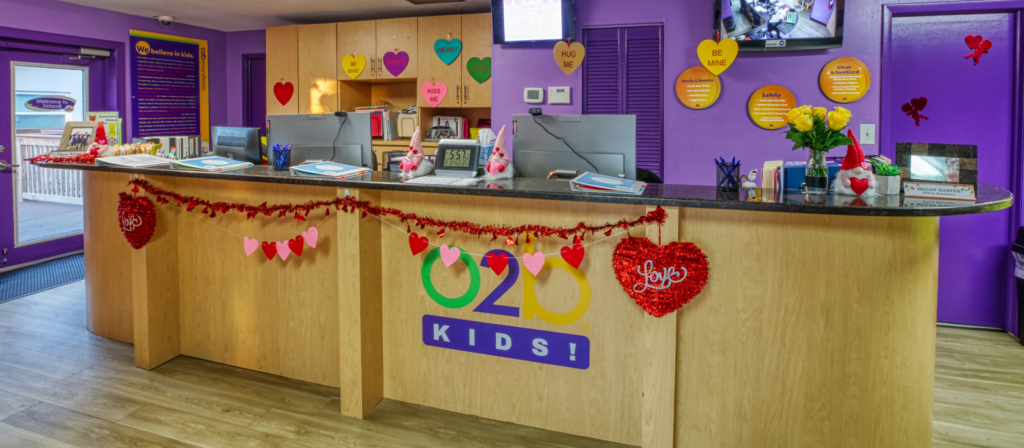
How to Clean the Front Desk:
- Use a disinfectant spray or pre-moistened wipes that are safe for high-touch public surfaces
- Wipe the entire surface, including edges and under overhangs, at least three times per day (morning, midday, closing)
- Allow surface to remain wet for the disinfectant’s required dwell time (typically 1–5 minutes)
- Avoid scented or bleach-based cleaners that may irritate visitors
- Dry with a clean microfiber cloth or allow to air-dry
Classrooms and Learning Areas
This is where children spend most of their day—eating, learning, and playing. High-touch surfaces and shared objects must be cleaned with extra care.
Focus on:
- Toys and manipulatives (sanitized daily)
- Tables, desks, chairs (before and after meals and activities)
- Shared supplies: crayons, books, puzzles, blocks
- Light switches, drawer handles, and cubby doors
- Soft furniture and rugs (vacuum daily, sanitize weekly)
Use a consistent daycare cleaning checklist to track sanitation tasks per room.
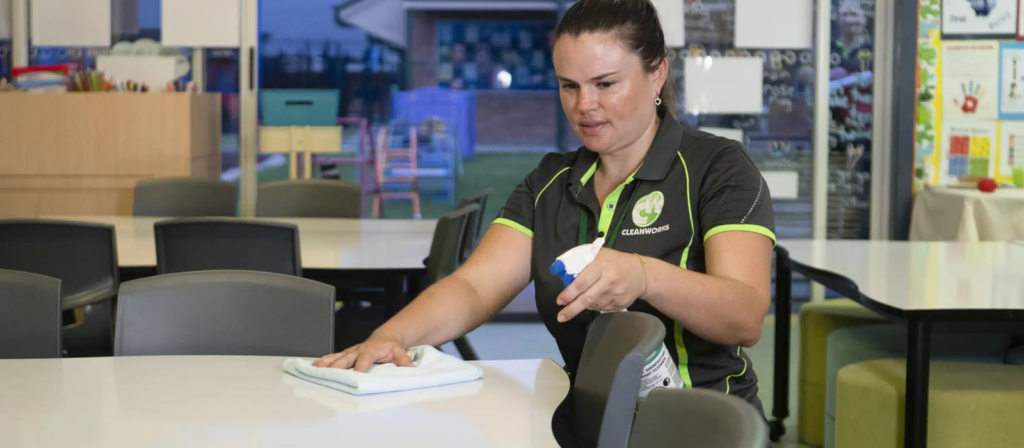
How to clean tables and toys:
- Clean preschool tables with warm, soapy water to remove debris
- Follow with a food-safe sanitizing spray before and after every meal or activity
- ل toys, wash hard plastic items in warm water and disinfect using a non-toxic solution; let air-dry
- Mouthed toys must be cleaned after each use
- Rotate cloth-based toys out daily and wash them in a hot water cycle at the end of the week
Diapering and Toileting Areas
These are high-risk zones where proper cleaning directly impacts health and safety.
Clean and disinfect:
- Diaper-changing surfaces (after every use)
- Diaper pails (daily)
- Potty chairs and training seats (after each use)
- Toilets, sinks, and faucet handles (at least twice daily)
- Wall areas around changing stations
Always use gloves and child-safe disinfectants. Keep a separate checklist for diapering areas to ensure 100% compliance.
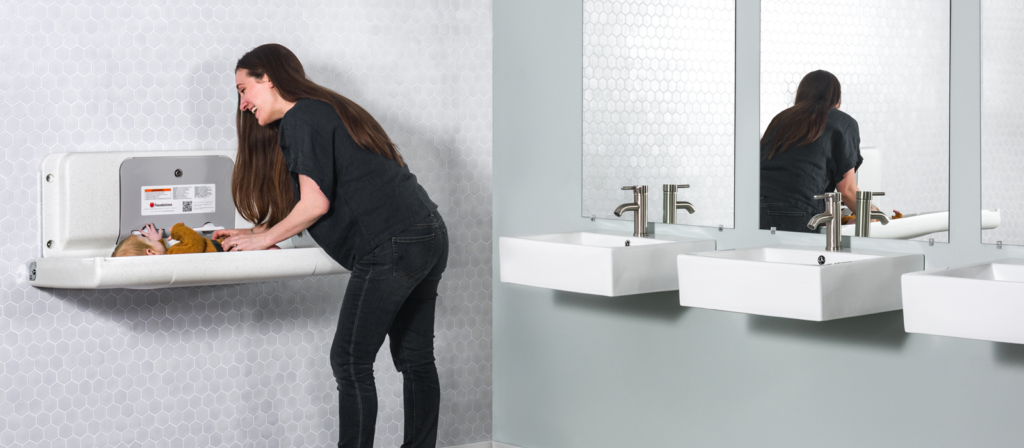
How to clean changing tables:
- After each use, first remove visible soil with disposable towels
- Wash the surface with soap and water
- Apply a disinfectant approved for use in diapering areas (look for labels stating “kills norovirus” or “kills E. coli”)
- Allow full contact time (minimum 2 minutes); air-dry or wipe with a clean towel
- Replace the disposable liner and discard the gloves immediately
- Disinfect any containers, handles, or diaper pail lids touched during the change
Kitchen and Food Prep Areas
Any space handling food must follow strict sanitation guidelines to prevent foodborne illnesses.
Clean and sanitize:
- Food prep surfaces (before and after each use)
- High chairs and booster seats (before and after every meal)
- Refrigerator and freezer (weekly)
- Dishes, bottles, and utensils (after every use)
- Microwave, toaster ovens, and sinks (daily)
- Cupboards and storage containers (monthly)
Consider partnering with a childcare cleaning company to support compliance with food safety standards.
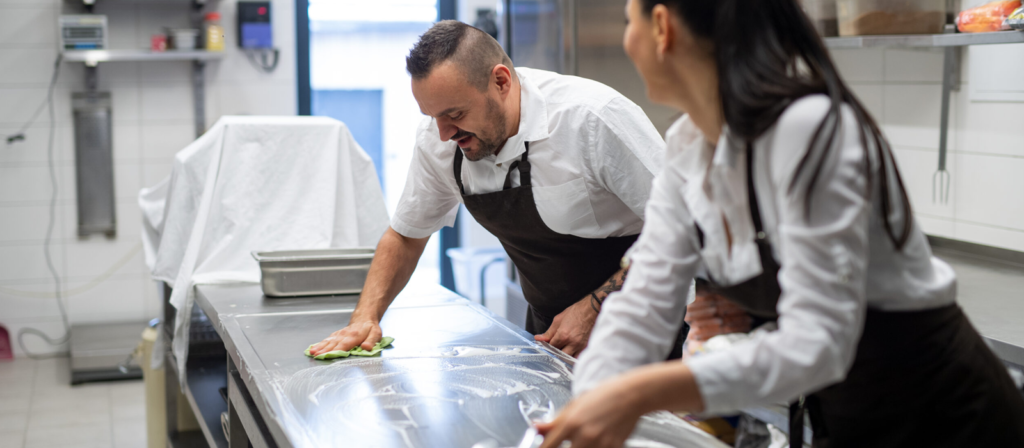
How to clean high chairs:
- Remove all food crumbs and debris from trays, seat, and harness
- Wash with hot soapy water or use a degreasing, food-contact-safe cleaner
- Rinse and sanitize tray surfaces with a food-grade sanitizing spray
- Wipe down buckles, seat padding, and chair frame
- Air-dry or use a clean towel—do not reassemble or store while damp
- Disinfect the storage area where high chairs are stacked or nested weekly
This cleaning routine is essential to meet childcare cleaning service standards.
Nap and Sleep Areas
Clean sleeping areas promote better rest and reduce the risk of illness.
Regular cleaning tasks:
- Nap mats and cribs (sanitize daily or after each use)
- Sheets and blankets (launder daily if shared)
- Crib bars and bed frames (disinfect weekly)
- Check for dust and lint under sleeping areas (vacuum weekly)
Label personal items to avoid accidental sharing and cross-contamination.
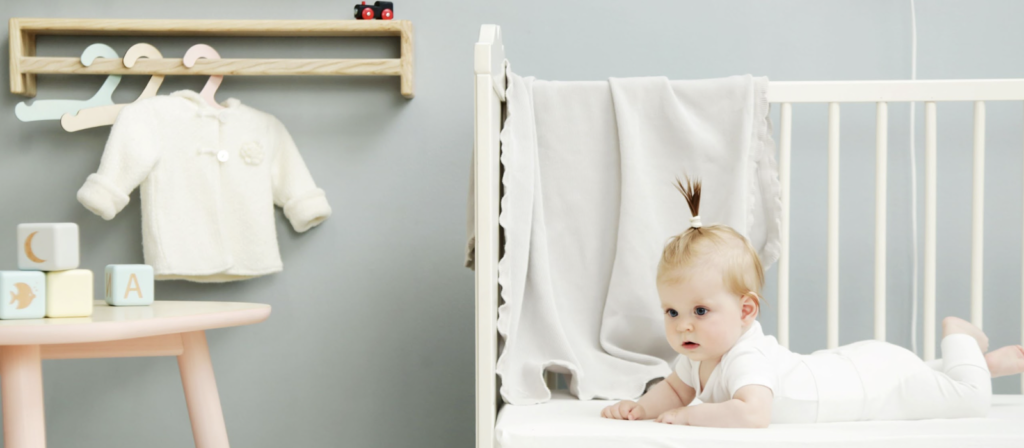
How to clean crib rails:
- Wipe rails with warm, soapy water daily to remove body oils and saliva
- Spray with a non-toxic disinfectant approved for infant contact surfaces
- Let disinfectant dwell for at least 60 seconds
- Use a separate cloth for each crib to prevent cross-contamination
- Sanitize teething guards or fabric covers weekly in hot water
Outdoor Play Areas
Outdoor equipment can collect dirt, bird droppings, pollen, and other irritants. Regular cleaning helps protect children during playtime.
Clean and maintain:
- Play structures (sanitize weekly or after visible messes)
- Handrails and climbing grips
- Sandbox toys and bins
- Outdoor mats and artificial turf
- Trash bins and fence gates
Inspect for mold or debris after rain, and pressure wash surfaces seasonally.
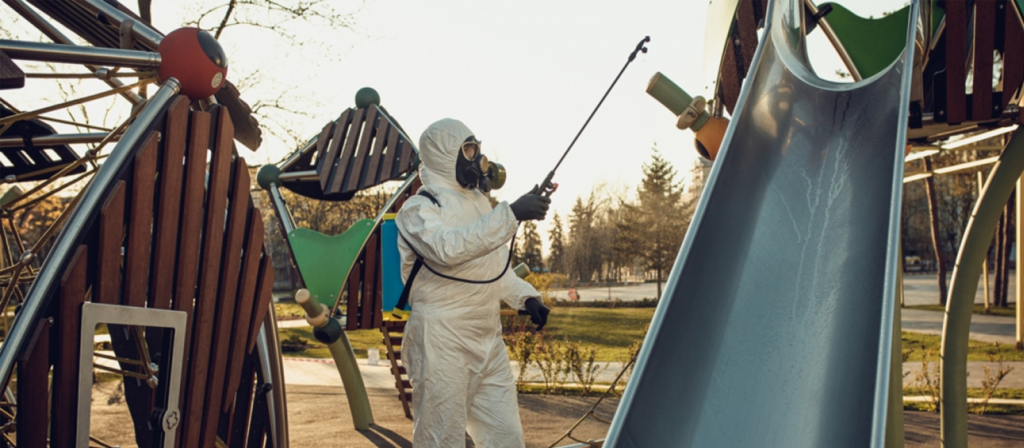
How to clean outdoor toys:
- Collect sandbox toys at the end of each day and rinse with clean water
- Scrub with soap and a long-handled brush to remove dirt and sand
- Soak in a sanitizing solution (1 tablespoon bleach to 1 gallon of water) for 2 minutes
- Rinse thoroughly and air-dry on a clean surface, not directly on the ground
- Store toys in a closed, dry container to prevent contamination from animals or weather
By cleaning each area based on its function and exposure level, you build a more innovative, safer system. A detailed childcare cleaning checklist by area can help distribute responsibilities, track consistency, and avoid missed tasks.
If managing all areas is overwhelming, a professional daycare janitorial service can supplement your team to ensure complete coverage, especially in high-risk zones.
Special Reminder: How to Clean Daycare Tables and Chairs Properly
- After every meal or messy activity, clean all surfaces with mild detergent and water.
- Disinfect using a food-safe product approved for early childhood settings and follow the contact time.
- Pay special attention to edges, seat bottoms, and under-table areas where grime may hide.
- For wooden furniture, avoid harsh chemicals and always use soft cloths to protect the finish.
- Once a week, inspect for stuck-on debris, stickers, or residue and clean thoroughly with microfiber cloths.
- Choose furniture made from smooth, non-porous materials to support easier and safer cleaning routines.
Essential Cleaning Supplies for Daycare Facilities
No matter how detailed your daycare cleaning checklist is, it won’t be effective without the right cleaning supplies. Using safe, effective, and regulatory-approved products ensures not only a clean environment but also a child-safe one. When you’re cleaning around infants, toddlers, and preschoolers, harsh chemicals or improper tools can create more harm than good.
Here’s a breakdown of the must-have supplies every daycare should stock—and how to use them effectively.
Basic Daily Cleaning Supplies
These are your everyday workhorses—the tools used during regular cleaning and sanitizing routines.
- All-purpose cleaner
- Disinfectant spray or wipes
- Sanitizing solution
- Hand soap and paper towels
- Microfiber cloths
- Spray bottles
- Trash can liners and gloves
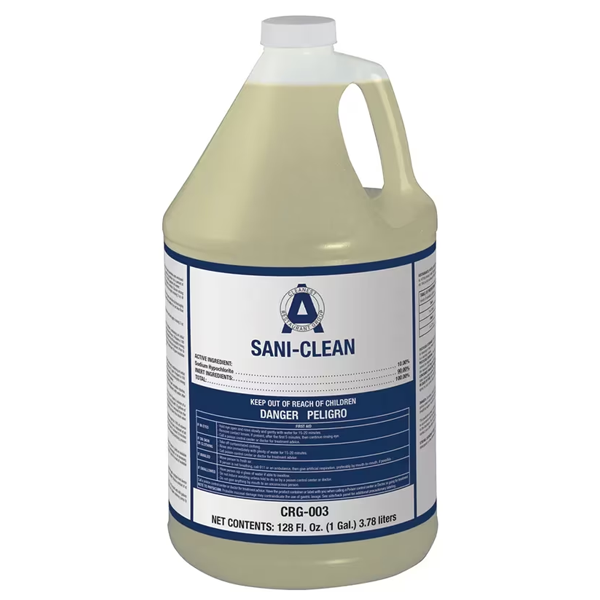
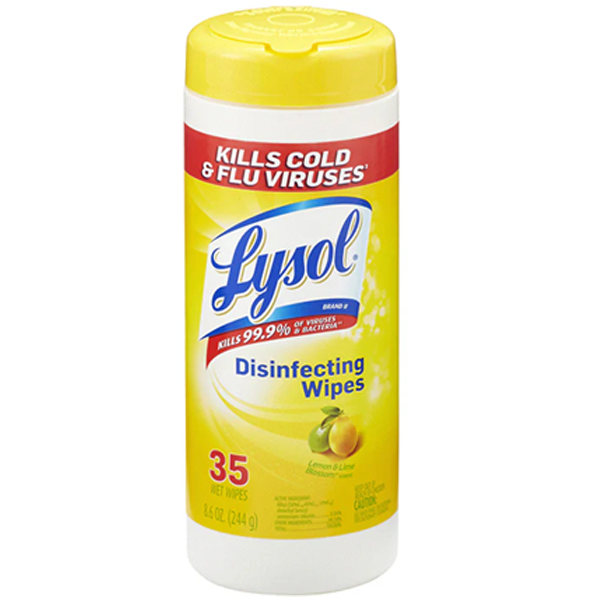
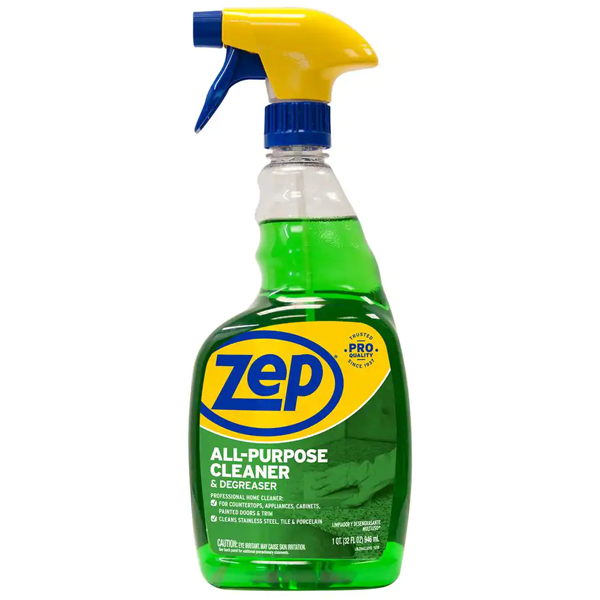
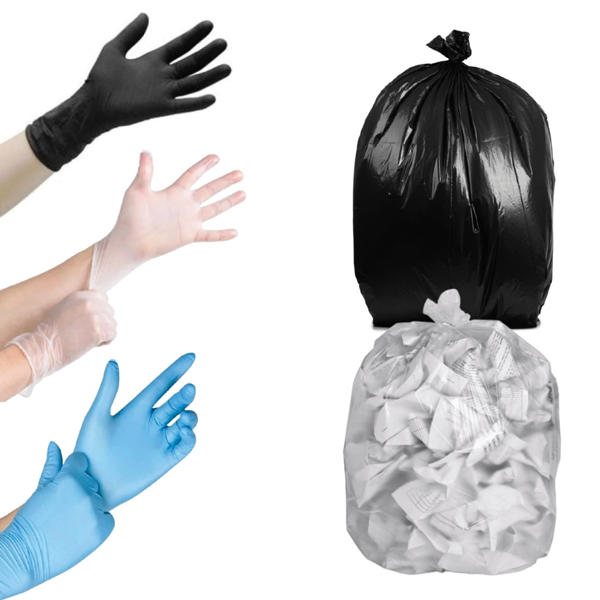
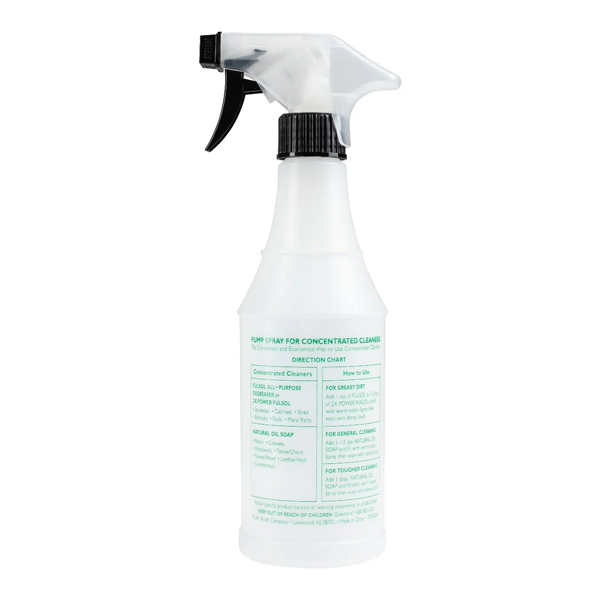
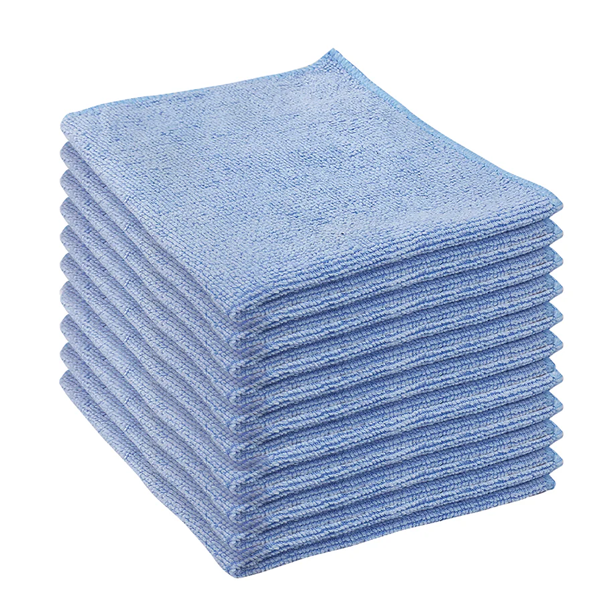
For facilities operating in the U.S., follow CDC or OSHA recommendations for cleaning products. In Canada, look for Health Canada–approved disinfectants. In Australia and Europe, choose products that meet AS/NZS standards or EU safety requirements.
Floor and Surface Cleaning Supplies
Daycare floors carry everything from snack crumbs to germs from shoes and spilled drinks. Consistent cleaning of these surfaces is essential.
- Mops and mop buckets with wringers
- Vacuum with HEPA filter
- Floor cleaner
- Carpet cleaner or shampoo machine
- Dustpans, brooms, and handheld vacuums
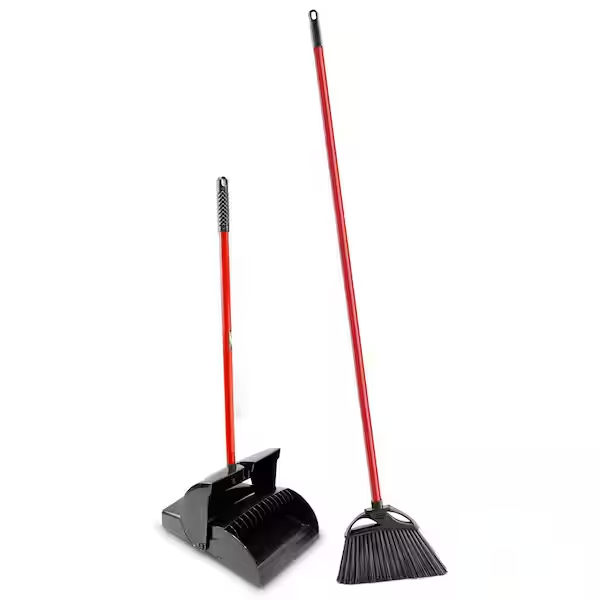
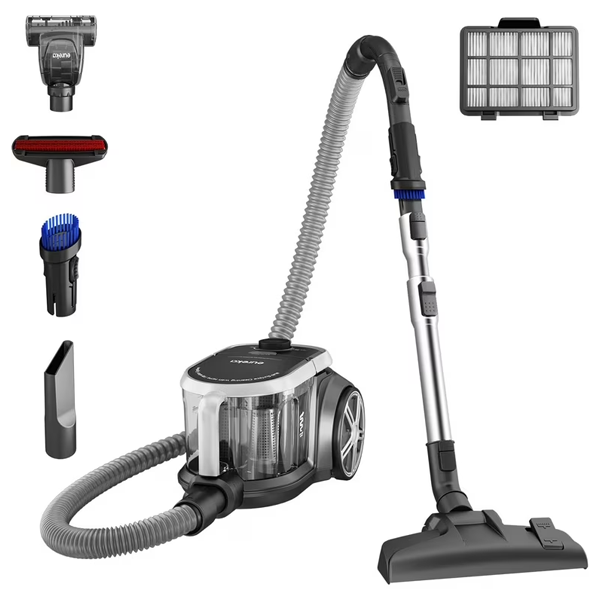
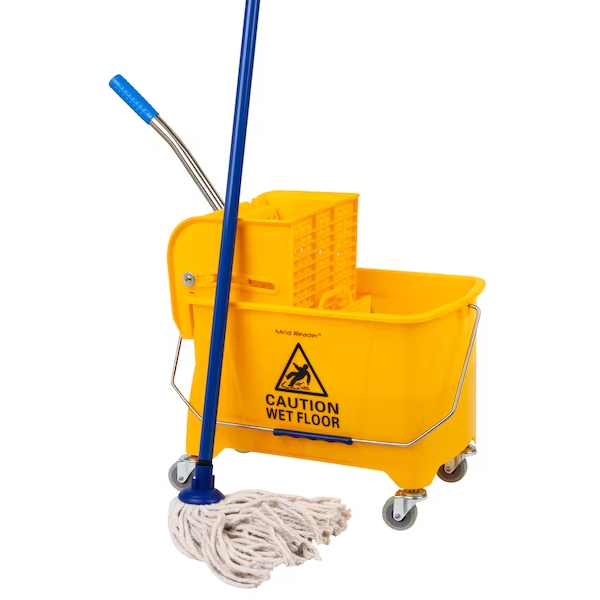
Restroom and Diapering Supplies
Restrooms and diapering stations need constant disinfection. Stock the following to stay compliant:
- Toilet bowl cleaner and brush
- Bleach solution for diaper areas
- Disposable gloves
- Changing table liners
- Air freshener
- Disinfectant wipes for spot cleaning between diaper changes
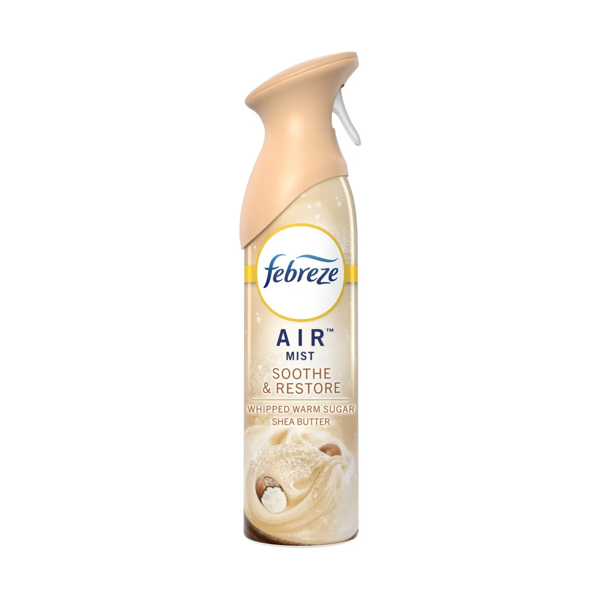
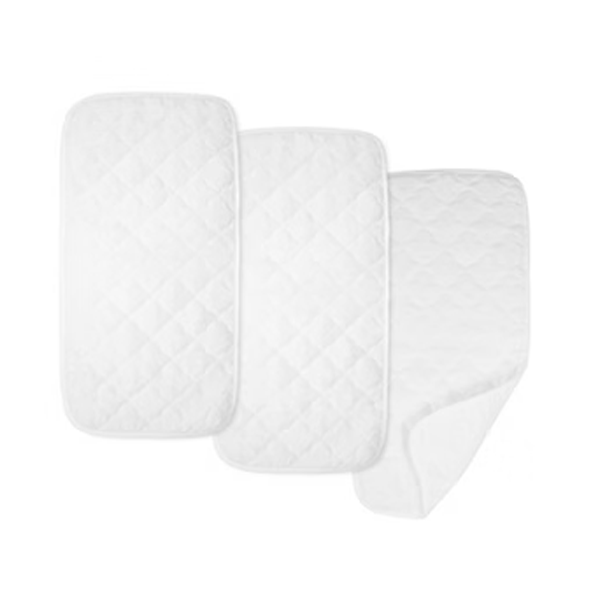
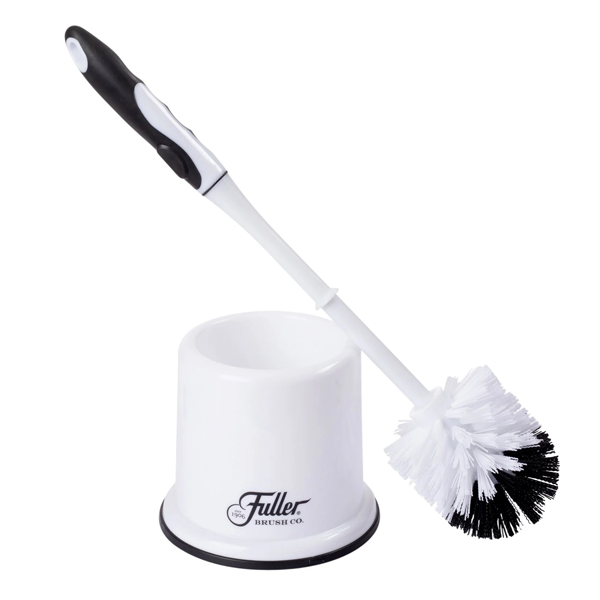
Laundry and Linen Supplies
For shared items like blankets, bibs, or sleep mats, sanitation doesn’t stop at the classroom—it continues in the laundry room.
- Hypoallergenic detergent
- Fabric-safe disinfectant
- Mesh laundry bags for sorting items by classroom
- Extra linens and blankets for rotation during washing cycles
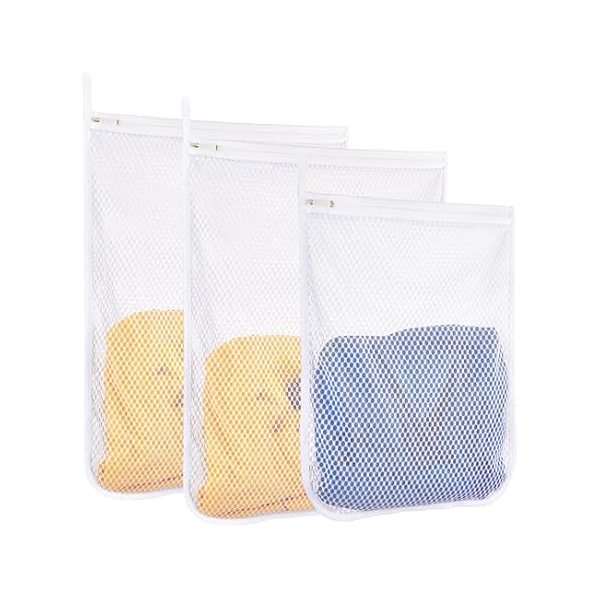

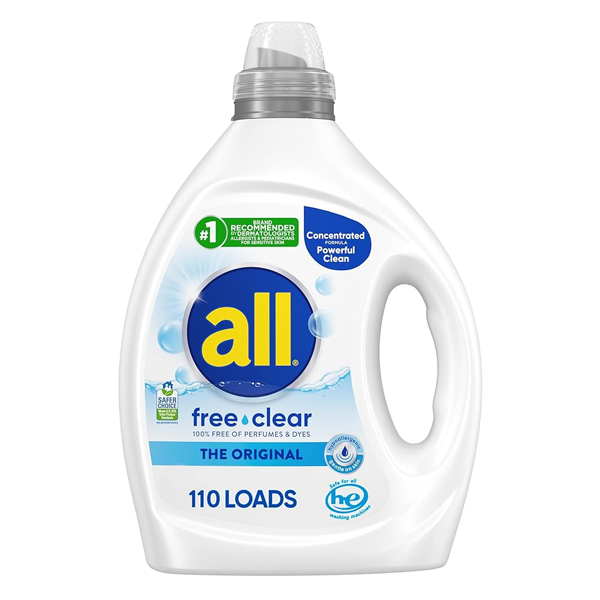
Optional but Helpful Additions
These aren’t mandatory, but they make your daycare cleaning process more efficient and professional.
- Cleaning caddy or rolling cart for mobile cleaning across rooms
- Wall-mounted hand sanitizer dispensers
- Label printer for cleaning bottles and chemical storage
- Laminated cleaning schedules and logs
- Air purifiers with HEPA filters to reduce airborne allergens
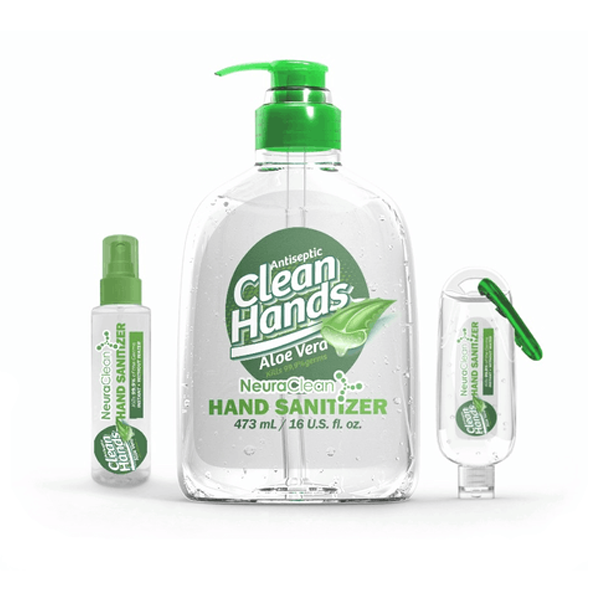
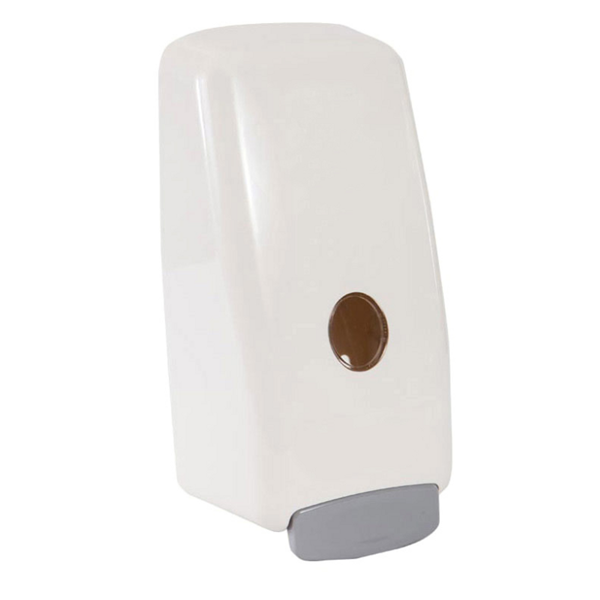
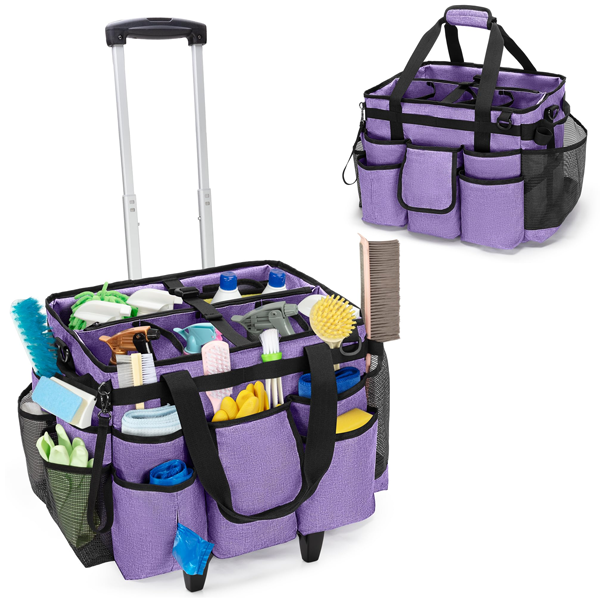

Receive a free catalog and custom layout to help you design your ideal classroom easily.
Keeping your supply inventory well-stocked is just as important as the cleaning itself. Perform a monthly supply audit to ensure nothing is expired, missing, or running low. And always train your team on how to use, store, and label cleaning products correctly.
Working with a certified childcare cleaning company or daycare janitorial service often includes access to industry-approved cleaning materials and safety data sheets (SDS), taking one more responsibility off your plate.
Deep Cleaning vs. Regular Cleaning
Both deep cleaning and regular cleaning play vital roles in maintaining a safe and healthy daycare environment, but they serve very different purposes. Understanding the difference helps you plan your cleaning schedule more effectively, meet compliance standards, and protect children from hidden health risks.
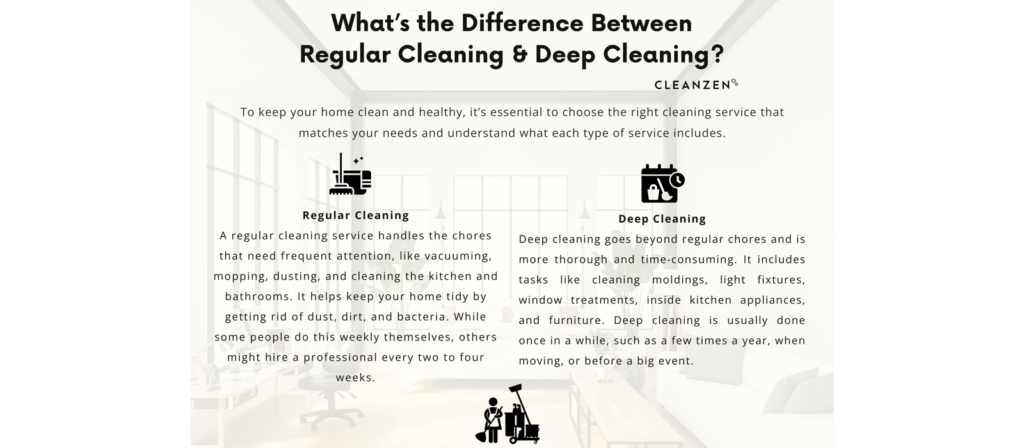
What Is Regular Daycare Cleaning
Regular cleaning refers to the daily or weekly tasks that keep surfaces tidy, visibly clean, and safe for use. These are the repeated routines you perform to remove dirt, crumbs, fingerprints, and minor spills. Most of your daycare cleaning checklist falls into this category.
Typical regular cleaning tasks include:
- Wiping down tables and chairs
- Sanitizing toys and play surfaces
- Mopping floors
- Cleaning bathrooms
- Emptying trash bins
- Disinfecting diapering areas and food prep counters
These tasks reduce germ buildup and maintain general hygiene. They are often done by internal staff throughout the day and logged for accountability.
What Is Deep Cleaning in Daycares?
Deep cleaning is a more intensive, less frequent process. It focuses on areas and surfaces that are not part of the daily or weekly routine but still collect germs, dust, mold, and allergens over time. Deep cleaning eliminates bacteria from hidden or hard-to-reach places that are often overlooked.
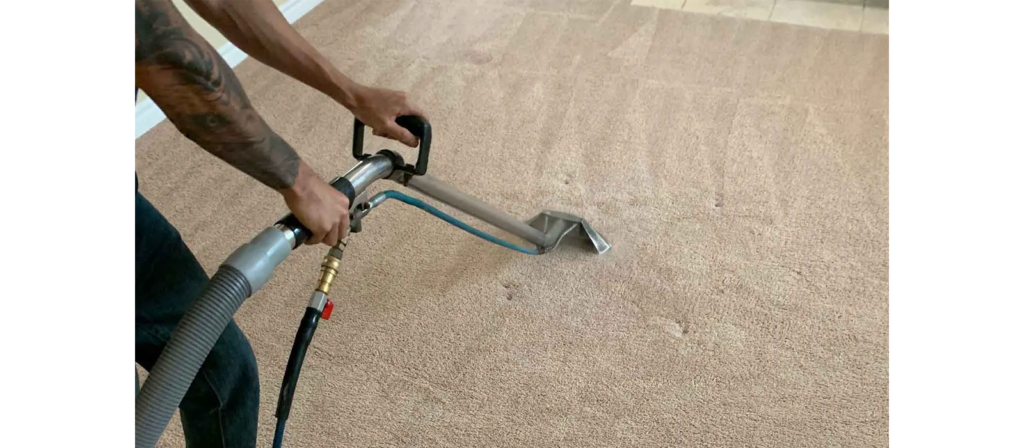
Examples of deep cleaning tasks include:
- Steam-cleaning carpets and rugs
- Washing walls, baseboards, and ceilings
- Cleaning behind and underneath large furniture or appliances
- Disinfecting HVAC vents and replacing filters
- Power washing outdoor equipment
- Scrubbing grout in bathroom tiles
- Disassembling and deep-cleaning cribs, bouncers, and sensory tables
Deep cleaning is typically performed monthly or quarterly, depending on your facility’s size and usage. Some centers choose to outsource this work to a professional daycare janitorial service to ensure it’s done thoroughly and safely.
When Should You Schedule a Deep Clean?
You should schedule deep cleaning:
- At the start or end of each season (quarterly)
- After illness outbreaks or high absenteeism
- Before a health inspection or licensing renewal
- Following renovations or significant events
- During school breaks or extended holidays
Having a set daycare cleaning checklist that includes deep-cleaning timelines helps avoid missed tasks and ensures consistent facility upkeep.
How to Train Your Staff for Cleaning Excellence
Having a thorough daycare cleaning checklist is only part of the equation. The other—and equally important—part is making sure your staff knows how to clean, what to clean, and why it matters. Well-trained staff are the front line in maintaining a safe and hygienic environment for children.
Without clear training, even the most detailed cleaning schedule will fall short. Inconsistent practices lead to missed spots, cross-contamination, or worse—violations during inspections. Here’s how to build a cleaning culture that’s efficient, consistent, and inspection-ready.
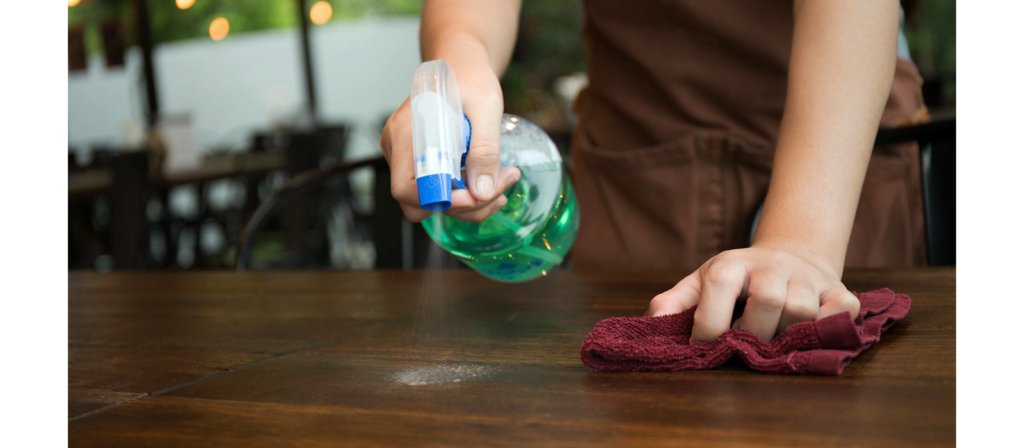
Step 1: Establish Clear Cleaning Roles
Assign specific cleaning responsibilities to each staff member. For example:
- Classroom aides handle toy sanitation and table cleaning
- Floaters wipe down shared spaces and door handles
- Kitchen staff manage food prep and dishwashing areas
Avoid the “someone will do it” mindset. Named accountability ensures every task in your daycare cleaning checklist gets done—every day.
Step 2: Provide Written Cleaning Protocols
Every staff member should have access to:
- A daily, weekly, and monthly childcare cleaning checklist
- Product usage instructions (dilution ratios, contact times)
- Safety protocols for handling disinfectants and waste
Post laminated versions of these checklists in every room, along with proper signage and labels on cleaning supplies.
Step 3: Conduct Hands-On Training Sessions
Train staff on-site, not just during onboarding, but also regularly throughout the year. Topics should include:
- The difference between cleaning, sanitizing, and disinfecting
- Safe storage of cleaning products
- How to sanitize mouthed toys and high chairs
- How to prevent cross-contamination using color-coded rags or gloves
Use real classroom scenarios and demonstrate cleaning techniques. Consider mock “health inspection drills” to prepare for honest evaluations.
Step 4: Monitor and Reinforce
Regular walkthroughs or spot checks help catch inconsistencies before they become problems. Use a supervisor or lead teacher to:
- Monitor cleaning logs
- Check high-touch areas for actual cleanliness
- Correct and retrain when needed
Publicly recognizing team members who consistently follow the daycare cleaning protocol builds motivation and morale.
Step 5: Keep Training Up to Date
Cleaning standards, product safety guidelines, and government regulations can change. Stay current by:
- Attending childcare facility management workshops
- Reviewing CDC or local health authority updates
- Partnering with a childcare cleaning company for training support
You can even bring in external experts for an annual refresher course to ensure compliance and professionalism.
Avoid Common Daycare Cleaning Mistakes
Even with a detailed daycare cleaning checklist, it’s surprisingly easy to overlook small details that can lead to big problems. In a childcare environment, one mistake—like missing a mouthed toy or using the wrong disinfectant—can quickly result in illness, inspection issues, or parent complaints.
To keep your facility safe, clean, and compliant, here are the most common daycare cleaning mistakes—and how to avoid them.
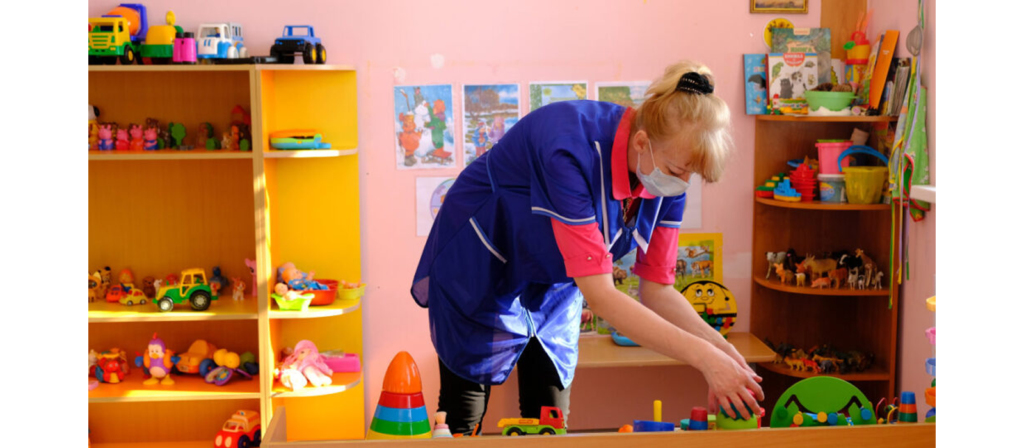
Using the Wrong Products
Not all cleaners are safe or effective for childcare environments. Many centers unknowingly use:
- Strong chemicals that irritate children’s skin or lungs
- Products that aren’t approved for food-contact surfaces
- Disinfectants that require long contact times, but are wiped too quickly
Solution:
Only use EPA-registered, child-safe disinfectants (or the Health Canada / EU / AS/NZS equivalent). Train your staff to read labels and follow instructions, especially for dwell times and dilution.
Confusing Cleaning, Sanitizing, and Disinfecting
Some staff use these terms interchangeably, but they are not the same. Sanitizing a diapering surface when you should disinfect it can leave dangerous germs behind.
Solution:
Ensure your childcare cleaning checklist clearly defines which action is required for each surface. Reinforce this through regular hands-on training.
Cross-Contaminating Surfaces
Using the same cloth to clean a toilet handle and a snack table? That’s a fast way to spread germs across the entire classroom.
Solution:
Use color-coded cleaning cloths or gloves for different areas: red for toilets, blue for the kitchen, and green for general surfaces. Make this a non-negotiable part of your daycare cleaning routine.
Skipping High-Touch Surfaces
Some surfaces may look clean but carry high bacterial loads—light switches, drawer handles, faucet knobs, and electronic devices are prime examples.
Solution:
Your daycare cleaning checklist should highlight these overlooked zones. Ensure they’re cleaned at least once daily, or more often in high-traffic classrooms.
Forgetting to Document Cleaning
No record? No proof. In an inspection or illness outbreak, lack of documentation puts your entire business at risk, even if cleaning occurred.
Solution:
Use printed or digital cleaning logs. Have staff sign off after completing tasks, especially for diapering, food prep, and deep cleaning.
Not Cleaning Tools
Mops, cloths, and vacuums get dirty, too. Reusing contaminated supplies spreads germs instead of removing them.
Solution:
Disinfect reusable cloths and mop heads after each use. Replace sponges, brushes, and rags regularly. Clean vacuum filters weekly and store all tools in a dry, sanitary space.
Overloading Staff with Cleaning
Cleaning can’t be an afterthought squeezed into an already-packed schedule. Overburdened staff may rush or skip necessary steps.
Solution:
Assign cleaning responsibilities clearly and rotate them fairly. Or partner with a childcare cleaning company or daycare janitorial service to supplement your team and avoid burnout.
By avoiding these common mistakes, your center can move from reactive cleaning to proactive protection. That means healthier children, happier parents, and a more professional facility—all built on the foundation of smart, consistent daycare cleaning.
Choosing the Right Daycare Janitorial Service
At a certain point, managing all cleaning in-house becomes too much, especially for larger facilities or fast-growing daycare groups. That’s where a professional daycare janitorial service comes in. The right partner can handle everything from deep cleaning to compliance documentation, freeing your staff to focus on children, not chemicals.
But not all cleaning companies are suited for childcare environments. Choosing the wrong provider can lead to poor results, health risks, or even failed inspections. Here’s how to choose the right childcare cleaning company for your center.
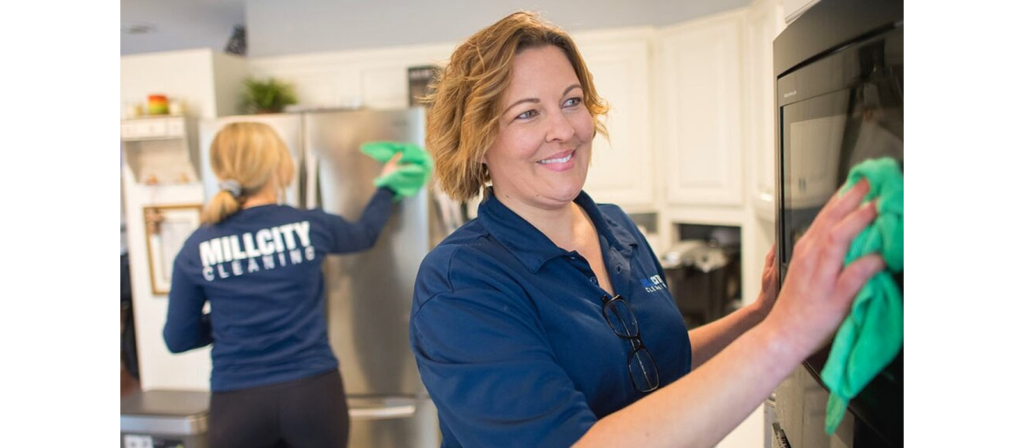
Look for Childcare-Specific Experience
Daycare facilities aren’t like offices or retail stores. Children are constantly on the floor, mouthing toys, and using shared spaces. You need a cleaning team that understands this and works accordingly.
Questions to ask:
- Do you have experience with daycare or early learning facilities?
- Can you provide references from other childcare clients?
- Are your staff trained in pediatric hygiene protocols?
A daycare janitorial service must know how to clean without exposing children to harsh chemicals or unsafe tools.
Confirm They Use Safe, Approved Products
Cleaning products must be:
- Non-toxic and safe for children
- Free from strong scents and irritants
- Approved by relevant health authorities (e.g., EPA, Health Canada, or AS/NZS)
- Clearly labeled and stored according to regulations
A good childcare cleaning company will provide a complete list of products they use, along with safety data sheets (SDS) for inspection or staff review.
Ask About Staff Training and Background Checks
You’re not just hiring cleaners—you’re letting people into your facility where children are present. Ensure the company conducts:
- Background checks and employee screening
- Child safety training
- Regular supervision and quality control visits
Reputable companies will have no problem disclosing this information.
Understand Their Scope of Work
Every daycare cleaning job should include a clear scope:
- Which areas will be cleaned
- How often are tasks completed
- Which materials will be provided by the service
- How will reporting and documentation be handled
Ask for a detailed quote that breaks down daily, weekly, and deep-cleaning services. Avoid vague contracts.
Check for Flexibility and After-Hours Options
Your cleaning shouldn’t interrupt learning. Look for companies that offer:
- Evening or weekend service windows
- Flexible schedules based on your center’s hours
- Emergency response (e.g., after illness outbreaks)
This is especially helpful for larger centers that need cleaning across multiple rooms without disruption.
Clarify Compliance and Documentation Support
A professional daycare janitorial service should help you meet inspection standards. They can provide:
- Daily cleaning logs
- Sanitization records
- Checklists aligned with CDC, NAEYC, or local health agency standards
- Proof of product usage and safety compliance
These documents are helpful not only for inspections but also for building parent confidence.
Consider Long-Term Partnership Value
Don’t just look at price. A great childcare cleaning company will:
- Save your team time
- Reduce staff burnout
- Improve overall hygiene
- Support your licensing requirements
They should feel like an extension of your team, not just a service provider.
Final Tips for a Sparkling Clean Center
A clean daycare isn’t just a requirement—it’s a competitive advantage. It builds parent trust, keeps kids healthy, and reflects the high standards of your center. Whether you’re managing a private preschool or a high-capacity childcare group, your daycare cleaning routine should be as structured and reliable as your educational program.
Here are the final expert tips to help your facility stay clean, compliant, and confidently parent-ready every day.
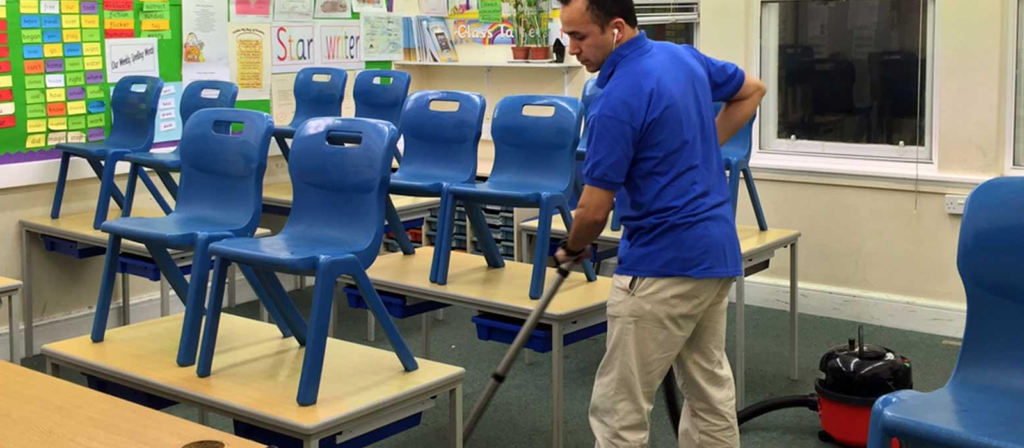
Use a Layered Cleaning Strategy
Combine daily, weekly, and monthly cleaning checklists to cover everything—from tables and toys to vents and flooring. Your daycare cleaning checklist should outline:
- Who cleans
- What gets cleaned
- How often
- What supplies are used
- How tasks are documented
A preschool cleaning checklist works best when posted in each room, tailored to specific needs like age group, flooring type, or furniture used.
Prioritize High-Touch Zones
Door handles, light switches, shared art supplies, daycare eating tables, and daycare high chairs are hotspots for germs. These should be cleaned and sanitized multiple times per day, especially during cold and flu season.
Missed details in these areas can lead to cross-contamination and outbreaks, so stay ahead by assigning them to your daily daycare task list.
Keep Cleaning Supplies Organized and Child-Safe
Make sure children’s cleaning supplies and chemicals are stored in:
- Locked cabinets
- Clearly labeled containers
- Away from reach, especially in childcare bathrooms or under sinks
At the same time, stock age-appropriate children’s cleaning tools like toy sanitizing spray or hand wipes, so kids can participate in keeping their space tidy in safe ways.
Partner With the Right Cleaning Service
A trusted daycare cleaning service or childcare cleaning company can handle deep cleaning, inspections, and overflow when your internal staff are stretched.
Choose companies that:
- Specializing in childcare cleaning services
- Provide certified, non-toxic products
- Offer flexibility for after-hours or weekend cleaning
- Document their work for compliance reports
If you operate across multiple locations or manage a large team, outsourcing your daycare janitorial services can streamline operations and improve consistency.
Always Audit and Adjust
No system stays perfect forever. Schedule quarterly reviews of your:
- Cleaning logs
- Childcare cleaning checklist
- Staff training materials
- Product inventory and expiration dates
Stay responsive to feedback from staff and parents, and adapt your routine if new regulations or illnesses emerge.
الأسئلة الشائعة
What cleaning responsibilities are involved in childcare?
Childcare cleaning includes daily tasks like sanitizing toys, disinfecting changing tables, wiping down daycare eating tables, cleaning floors, and maintaining childcare bathrooms. Staff must also follow a structured daycare cleaning checklist that covers routine sanitization, waste removal, and laundry, while ensuring safe product use and hygiene compliance.
How should one go about cleaning a daycare classroom?
Start by clearing surfaces and removing any waste. Wipe down tables, chairs, and toys with soap and water, then follow with an approved disinfectant. Floors should be vacuumed or mopped, and high-touch areas like doorknobs and light switches disinfected. Always follow your preschool cleaning checklist and wear gloves for safety.
Which disinfectants are commonly utilized in daycares?
Daycares typically use EPA-registered or Health Canada–approved disinfectants that are non-toxic and child-safe. These include hydrogen peroxide–based sprays or diluted bleach solutions for high-risk areas like diapering stations. All products should meet safety standards and be listed in your childcare cleaning service documentation.
What is the recommended frequency for cleaning a daycare facility?
Daycare cleaning should happen multiple times a day. Dining surfaces, bathrooms, and diapering areas must be cleaned and disinfected after every use. General classroom areas should be cleaned daily, with deeper tasks like carpet cleaning or toy rotation handled weekly or monthly, depending on your daycare cleaning list.
How regularly should toys be sanitized in childcare settings?
Toys should be sanitized at least daily. Items that children put in their mouths—like soft blocks or infant rattles—must be cleaned and sanitized after each use. Use your childcare cleaning checklist to rotate, clean, and dry toys properly using safe disinfectants.
What should I do if a child gets sick in the daycare?
Immediately isolate the child in a designated area and notify their guardian. After the child leaves, thoroughly disinfect the isolation space, including toys, furniture, and nearby surfaces. Follow your local health authority’s disinfecting centers’ definition and update your daycare cleaning jobs log with a record of the incident.
Conclusion: Creating a Safe and Healthy Space for Children
Maintaining a safe daycare starts with consistent, high-standard daycare cleaning. From sanitizing high-touch areas to deep cleaning shared spaces, a reliable routine helps prevent illness, meet regulations, and reassure parents.
But effective cleaning doesn’t stop at checklists—the right environment supports it. At أفضل مدارس مونتيسوري, we understand how thoughtfully designed furniture can simplify daily cleaning, reduce germ buildup, and support healthier classrooms. Paired with strong cleaning systems, it’s one more way to create a space where children thrive safely, every day.

